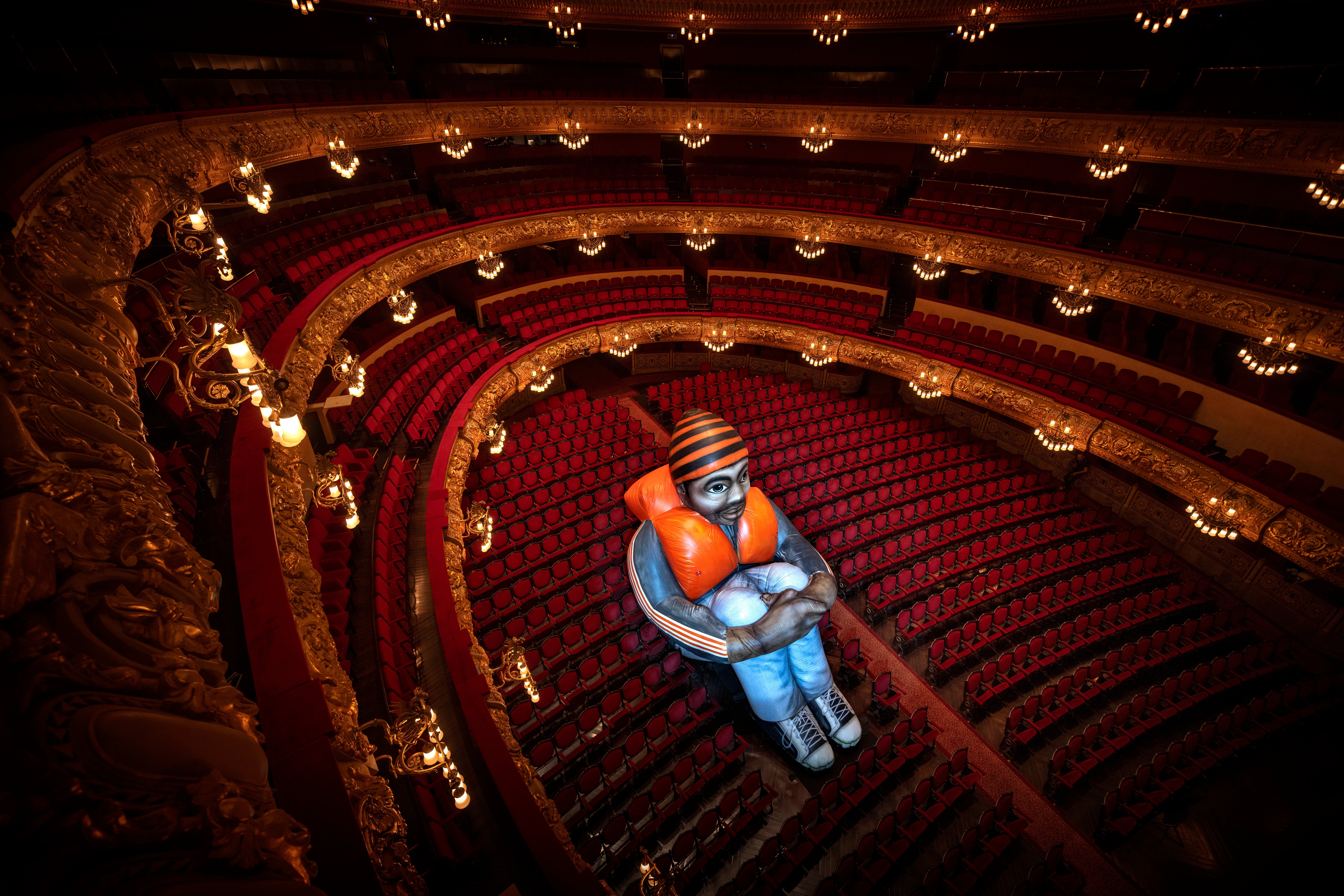As the number of displaced people surges, an 'Inflatable Refugee' in Barcelona sparks questions
A 20-foot-tall “Inflatable Refugee” is on display at Barcelona's Gran Teatre del Liceu opera house

Hugging his knees and clad in a bright orange life vest, the giant “Inflatable Refugee” looks vulnerable as he sits alone in a sea of empty red velvet chairs. Belgian visual artists Schellekens & Peleman, who created the figure in 2015 following the refugee crisis in Europe, have brought the installation to Barcelona's Gran Teatre del Liceu opera house in hopes of once again calling attention to the plight of refugees.
The 6-meter (20-foot) -tall inflatable figure, made of the same material as the delicate rubber boats used by smugglers to send migrants to European shores, will be on public display for opera goers until June 28 in the theater's hall of mirrors. The artists hope that its outsize dimensions will force people to reflect about their perception of asylum seekers.
“Its size represents how the Western world perceives him. So you could ask yourself is it a big opportunity or a big problem?” Dirk Schellekens told The Associated Press in Barcelona.
The artistic intervention coincides with an alarming number: 120 million people around the world have been forcibly displaced from their homes due to conflict and other protracted crises, the U.N. refugee agency announced Thursday. That's equivalent to the population of Japan.
In Sudan alone, more than 10 million people have been displaced by the ongoing civil war. Other conflicts that are still raging in places such as the Democratic Republic of Congo, Myanmar and Syria continue to wreak havoc, UNHCR said. In Gaza, where the brutal war between Israel and Hamas has entered its ninth month, 75% of the population is essentially homeless.
While the vast majority of displaced people remain within their nation's borders, 43 million men, women and children have sought refuge in other countries and require international protection, the agency said.
Migration has long been politicized in Europe, including by far-right parties that made significant gains in the most recent European parliamentary elections. But the majority of refugees are hosted by low- and middle-income countries.
“What concerns me most is the instrumentalization that some politicians have carried out in respect of refugees and, by the way, migrants as well,” U.N. High Commissioner for Refugees Filippo Grandi told AP. "Depicting them as a threat, as people that come to steal jobs, to threaten values, to undermine security, is so worrying in so many ways ... and often extremely racist.”
___
Follow AP’s coverage of migration at https://apnews.com/hub/migration
Bookmark popover
Removed from bookmarks